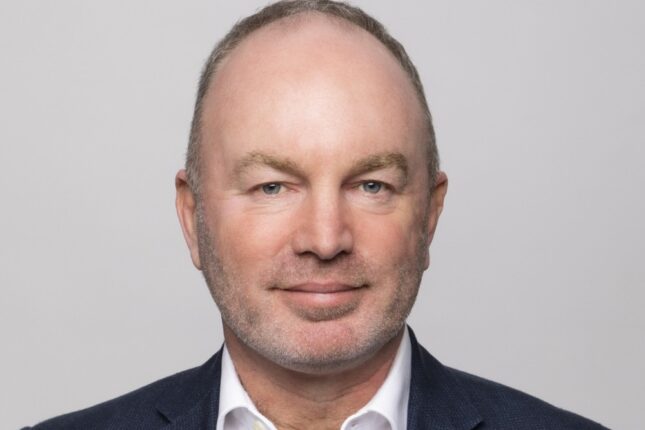New Zealand’s KiwiSaver funds could take a leaf out of the Australian super playbook, when it comes to their real asset investment strategy, Mercer’s Padraig Brown says
For as long as KiwiSaver, New Zealand’s superannuation system, has existed, most fund managers have gained exposure to real estate and infrastructure, mostly through the limited number of listed companies on the New Zealand Stock Exchange.
KiwiSaver funds generally do not have specific allocations to either property or infrastructure. Instead, these asset classes are folded into their equity portfolios, which account for approximately 60 per cent of a balanced fund’s assets under management.
This approach is markedly different from that of Australian super funds, observes Padraig Brown, Chief Investment Officer of Mercer New Zealand.
“That’s been a challenging journey for many of the (NZ) funds invested in listed real assets, whether property or infrastructure, because they’ve been very volatile. In the most recent cycles, during the GFC and COVID, we saw values in these asset classes fall in line with global equities.”
As a result, Brown says, listed infrastructure and real estate have generally failed to serve as strong diversifiers of returns for KiwiSaver funds.
Lessons Learned
KiwiSaver funds could take a leaf out of the Australian super playbook, Brown believes. Most Australian super funds are invested in unlisted real estate and infrastructure, while others have adopted a blended approach by combining listed and unlisted assets in their portfolios.
Returns from unlisted real estate and infrastructure have contributed to the Australian funds’ consistent double-digit gains over decades. They have benefited from the illiquidity premium of these assets, which helps offset volatility in domestic and global equity markets.
Mercer NZ allocates a combined six per cent of its portfolio to unlisted property and unlisted infrastructure in its Mercer KiwiSaver Funds and other funds that it manages for clients. It recently deployed a further two per cent allocation to private credit.
Brown is well-acquainted with Australian super fund investment strategies, having worked at Mercer Australia in Sydney from 2011 until May 2022, before returning to Auckland for his current role. His views on private market assets are shaped by his time at BlackRock, JLL and Credit Suisse earlier in his career, firms steeped in experience with unlisted investments.
As Head of Property for Australia and the Pacific, Brown helped build a substantial real estate portfolio for Mercer Super, which includes stakes in convenience shopping centres and prime office buildings, including 420 George Street in Sydney’s CBD.
Back in Auckland, his first major direct property deal involved partnering with logistics and data centre giant Goodman Group to invest in one of the country’s largest and best-located industrial assets, about 20 kilometres from the city centre with direct motorway access.
The asset, Highbrook Business Park, is valued at NZ$2.1 billion and was developed over two decades. It now hosts 80 buildings leased to major national and international companies, with around 6,000 people working there.
Mercer contributed NZ$150 million for a 12.5 per cent interest, alongside Goodman Group’s NZ$200 million, to acquire a 28 per cent stake through a partnership with the NZ-listed Goodman Property Trust (GMT), which retained a 72 per cent share.
“This investment provides strong downside risk protection, growing income and will grow in value alongside economic and population growth. We prefer high-quality infrastructure and real estate assets that have quasi-monopolistic characteristics. They’re extremely difficult to replicate, dominant in their local areas, and recognised as best-in-class by tenants,” Brown says.
He adds that listed property companies have been trading below asset valuations over the past few years, making owners more willing to sell top-quality properties.

A lot of quality assets weren’t available a few years ago when REITs were trading above asset valuation. It’s an example of REITs offloading prime assets when they have few options to raise equity. The current market provides a once-in-a-cycle opportunity to acquire these high-quality assets
“A lot of quality assets weren’t available a few years ago when REITs were trading above asset valuation. It’s an example of REITs offloading prime assets when they have few options to raise equity. The current market provides a once-in-a-cycle opportunity to acquire these high-quality assets.”
Greg Goodman, Group Chief Executive Officer of Goodman Group, says that by creating a partnership with the parent company and Mercer, the NZ-listed GMT can release capital and reduce debt. “GMT’s strategy in forming this partnership mirrors what Goodman Group is doing globally. There’s plenty of liquidity and capital partners, so our companies don’t have to rely heavily on leverage.”
Mercer has similarly forged partnerships with property groups such as Charter Hall, Dexus and Investa.
“We’ve bought five shopping centres in Sydney over the past decade at well below replacement cost, at a time when retail was out of fashion with investors. These shopping centres focus on non-discretionary convenience retail and have delivered double-digit performance for our funds, despite the COVID lockdowns and increase in online retail,” Brown says.
Mercer NZ continues to look for opportunities in both real estate and infrastructure in New Zealand.
“In Australia, post-COVID, we have seen a withdrawal of capital presenting opportunities to invest in the highest-quality assets in the market opportunities that only present once in a cycle,” he says.
“In the wake of the pandemic and higher interest rates, many foreign investors in infrastructure and real estate pulled back to focus on their home markets. It’s taken them quite some time to start looking offshore again.”
Meanwhile, listed investors have largely stayed out of the market due to unfavourable equity raising conditions. “We think that’s created some very good opportunities to step in,” Brown adds.
Constraints in NZ Real Asset Market
Being a small market, New Zealand also faces unique constraints. There is limited appetite or capacity to buy large assets, which are taking longer to sell. For instance, a 49 per cent stake in five Westfield shopping centres in Auckland and Christchurch, valued at over NZ$2 billion, has been on the market since March 2024, after Singapore’s GIC decided to divest its interest. GIC originally purchased the stake for A$930 million in 2014. The remaining 51 per cent is owned by Scentre Group.
Until KiwiSaver funds and local institutional capital pools grow and they can form partnerships, it will remain challenging to secure large assets outright, Brown believes. He points to the recent partnership between Brookfield Asset Management and local iwi business, Tainui Group Holdings, to develop the NZ$1 billion Ruakura inland port and logistics hub in Hamilton.
“This highlights the opportunity to pool capital and allow local investors to partner with global expertise to develop large scale world-class assets,” he says.
Other opportunities are also emerging as the government increasingly embraces joint ventures with the private sector to fund New Zealand’s “infrastructure deficit” and tackle the housing shortage.
“Community foundations have a mandate to do good in their local regions. They can’t always achieve that through donations alone, so they’re increasingly looking to invest locally, for example into affordable housing for key workers. It’s still very early days; the conversations are just starting at a low level. But there’s definitely a desire to scale up in that space.”
_________
[i3] Insights is the official educational bulletin of the Investment Innovation Institute [i3]. It covers major trends and innovations in institutional investing, providing independent and thought-provoking content about pension funds, insurance companies and sovereign wealth funds across the globe.


